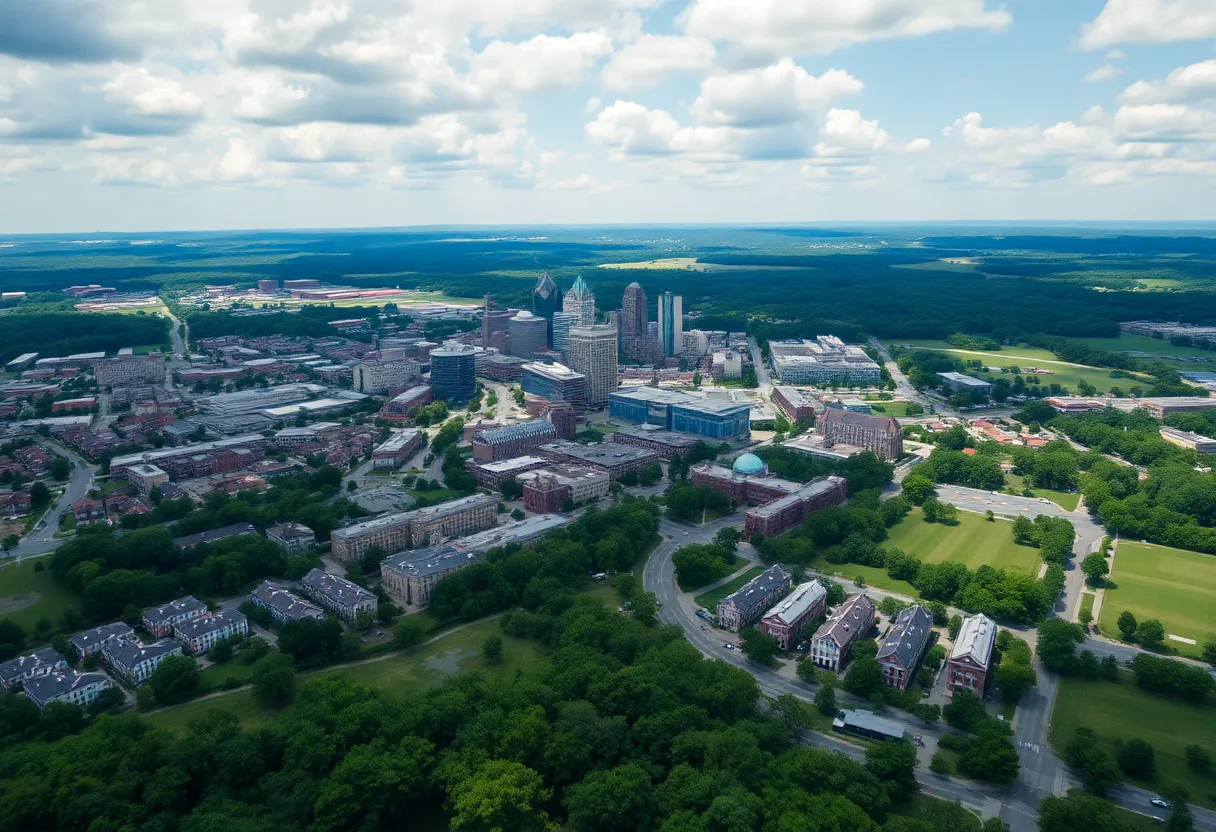News Summary
Lexington, Kentucky, is being recognized as a potential climate haven, with forecasts indicating a population increase of 134,000 residents by 2050. The city’s geography provides protection against severe weather, making it an attractive option for climate refugees. Experts urge proactive urban planning to address the challenges of accommodating this growth and preserving essential farmland. Lexington’s appeal as a university town and its world-class health center further bolster its position as a safe and thriving community in a changing climate.
Lexington Positioned as a Potential Climate Haven Amidst Increasing Population Growth Projections
Lexington, Kentucky is being positioned as a potential climate haven as population growth forecasts project an increase of about 134,000 residents by 2050. This increase represents a 26% growth over the next 25 years, raising concerns about how the city can accommodate both its rising population and potential climate refugees.
According to recent discussions, Lexington’s geography plays a crucial role in its appeal as a safe living destination. The city sits on a hill and a plateau, offering greater protection against harsh weather events compared to surrounding areas. While the city has experienced damaging weather, like straight-line winds and ice storms, these occurrences are less severe than those faced by its neighbors.
Experts suggest the rise of climate refugees—people displaced due to worsening climate conditions—could make Lexington’s population projections conservative. Factors like sea level rise, severe flooding, and increased instances of tornadoes and hurricanes could drive more individuals to seek refuge in Lexington. This surge in residents may exceed current estimates, further stressing the city’s infrastructure and resources.
Key Factors Enhancing Lexington’s Appeal
Several elements contribute to Lexington’s attractiveness as a climate haven. Its central location within the region allows easy access to surrounding areas. Additionally, it is noted for having a world-class health center, which enhances its suitability for new residents. Furthermore, Lexington’s identity as a university town and a notable tourist destination presents additional draws for those seeking to settle in a safe, thriving community.
Urban Planning Considerations for Population Growth
With the potential influx of climate refugees, experts emphasize the need for a thoughtful urban planning strategy to manage this growth sustainably. The suggestion of developing a garden city plan has been put forth, which would connect Lexington to neighboring towns like Versailles and Georgetown through a high-speed rail line. This plan aims to create higher-density and affordable housing while preserving green spaces that separate development areas.
Inspiration for modern urban planning could be taken from the interurban rail service that operated between 1902 and 1934, linking Lexington with nearby towns. Utilizing this historical context, planners may envision a system that supports transit-oriented development and minimizes the impact on farmland.
Concerns Over Farmland Loss
One of the critical concerns in the face of expanding urbanization is the potential loss of irreplaceable farmland—a vital resource for sustainable living. The growing population may increase pressure on land use, disrupting agricultural practices that have historical significance in the area. Urgent action in city planning is deemed necessary to preserve these essential landscapes.
The Urgency of Proactive Measures
The narrative surrounding Lexington’s position as a climate haven emphasizes the urgency for proactive measures in urban planning. With climate conditions continuing to worsen across various regions, Lexington could face significant political and financial strains to accommodate a new population that may arrive seeking safety and stability.
By examining and implementing adaptive urban planning approaches, Lexington aims to prepare for a changing climate while ensuring manageable growth. The focus remains on accommodating future generations while maintaining the city’s character and the welfare of its environment.
Deeper Dive: News & Info About This Topic
HERE Resources
Canada and U.S. Engage in Tariff Showdown
Winter Woes in Lexington: Snow Removal Costs Skyrocket
Lexington, KY Ranks 15th Best Place to Live in the U.S.
Additional Resources
- Kentucky Op-Ed on Climate Havens
- Washington Post: Battle of Lexington
- The Guardian: Hurricane Helene and Climate Change
- Weather.com 10-Day Forecast
- Kentucky News: Fayette County Updates

Author: STAFF HERE LEXINGTON KY STAFF
The LEXINGTON STAFF WRITER represents the experienced team at HERELexingtonKY.com, your go-to source for actionable local news and information in Lexington, Fayette County, and beyond. Specializing in "news you can use," we cover essential topics like product reviews for personal and business needs, local business directories, politics, real estate trends, neighborhood insights, and state news affecting the area—with deep expertise drawn from years of dedicated reporting and strong community input, including local press releases and business updates. We deliver top reporting on high-value events such as Woodland Art Fair, Crave Food and Music Festival, and Railbird Festival. Our coverage extends to key organizations like Commerce Lexington and Blue Grass Community Foundation, plus leading businesses in education, manufacturing, and technology that power the local economy such as University of Kentucky, Toyota Motor Manufacturing, and Lexmark. As part of the broader HERE network, including HEREBowlingGreen.com and HERELouisville.com, we provide comprehensive, credible insights into Kentucky's dynamic landscape.





